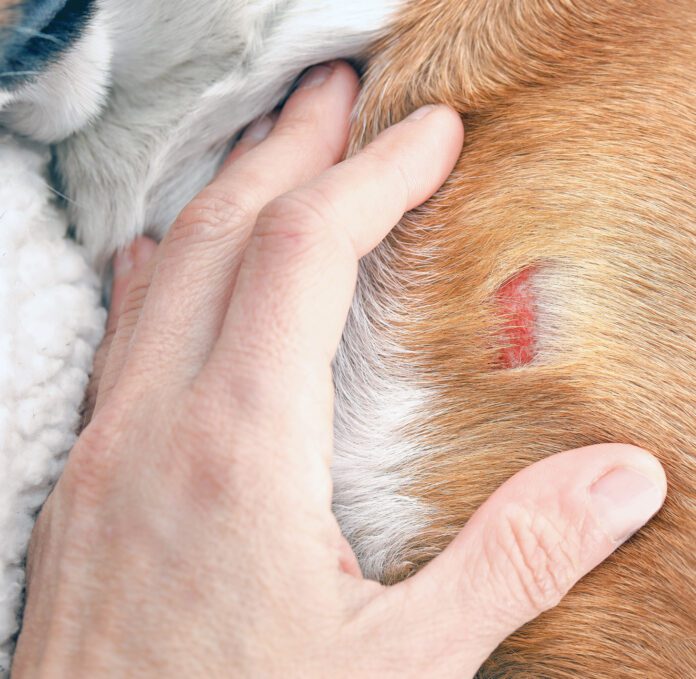Bacteria are ever present in your dog’s world. Most are important to his overall health, but a bacterial infection that makes your dog ill may require a trip to the veterinarian.
Dog bacterial infections can happen in several ways:
- An injury provides an opening for pathogenic (bad) bacteria to enter
- Overzealous use of antibiotics wipe out the good bacteria, so harmful bacteria can take over
- A trauma or viral/fungal infection opens the door for bacteria to set up shop as a secondary infection
- Dietary problems, such as too quick a change in food
- Skin allergies and infections
- Hot spots – the classic hot spot on the dog’s neck or cheek is an example of a staph bacterial infection
Harmful Bacteria Invasions
Sometimes bacterial infections are due to the overgrowth of healthy bacteria. Remember, you can’t rid your dog of all bacteria, because most of these microorganisms are beneficial and important to your dog’s microbiome, which is a community of beneficial organisms that keep us healthy. If your dog has a bacterial infection, immediate intervention can bring the best prognosis.
When the ratio of good to harmful bacterial species gets out of whack, such as on the skin or the hair follicles, clinical problems or signs of infection can arise. This is one of the reasons the improper use of antibiotics is so dangerous. Overuse of antibiotics can lead to resistance developing in harmful bacteria that are normally well handled by your dog’s immune system.
Fighting Bacterial Infections
If your dog gets a cut or wound, clean it thoroughly. First flush with water, then use a cleanser such as chlorhexidine. Try to avoid using antibiotics. If the injury doesn’t heal, contact your veterinarian.
If bacteria gain access to the urinary tract, infections can set up. Be aware of the symptoms and contact your veterinarian.
Make diet changes gradually, so your dog’s gut microbiome can adjust to the change in nutrients.
Get treatment for yeast/fungal infections right away. Most infections can be treated topically and with appropriate systemic medications, if needed, to prevent any secondary bacterial overgrowth.
Use any prescribed antibiotics for bacterial infections exactly as prescribed and use up the entire prescription unless told otherwise. Your veterinarian may recommend a culture and sensitivity laboratory test if an infection recurs to help guide the treatment choices.
Remember, normal bacteria maintain a population on your dog’s skin and help your dog digest food. “Good” bacteria help to counter “bad” bacteria and keep your dog healthy. But when things get out of balance, infections can and do set in.






